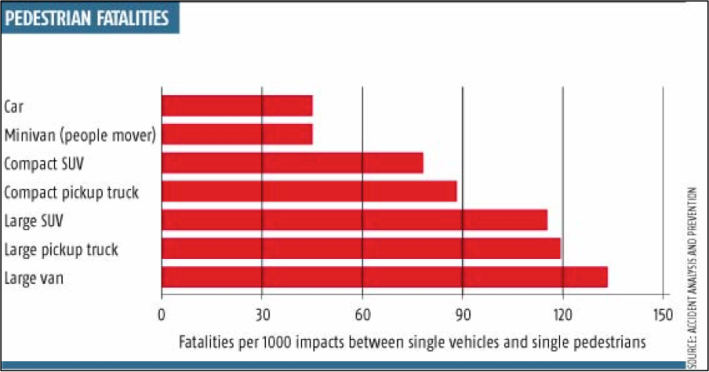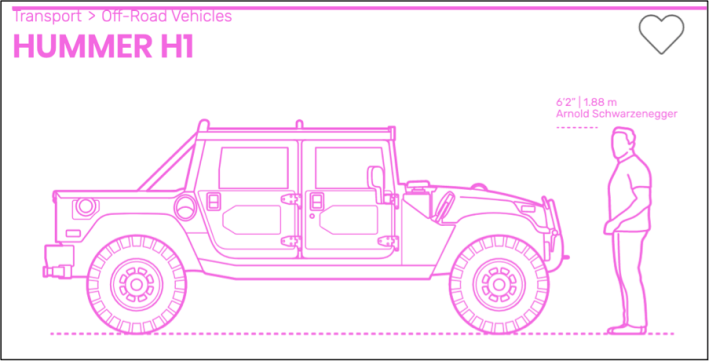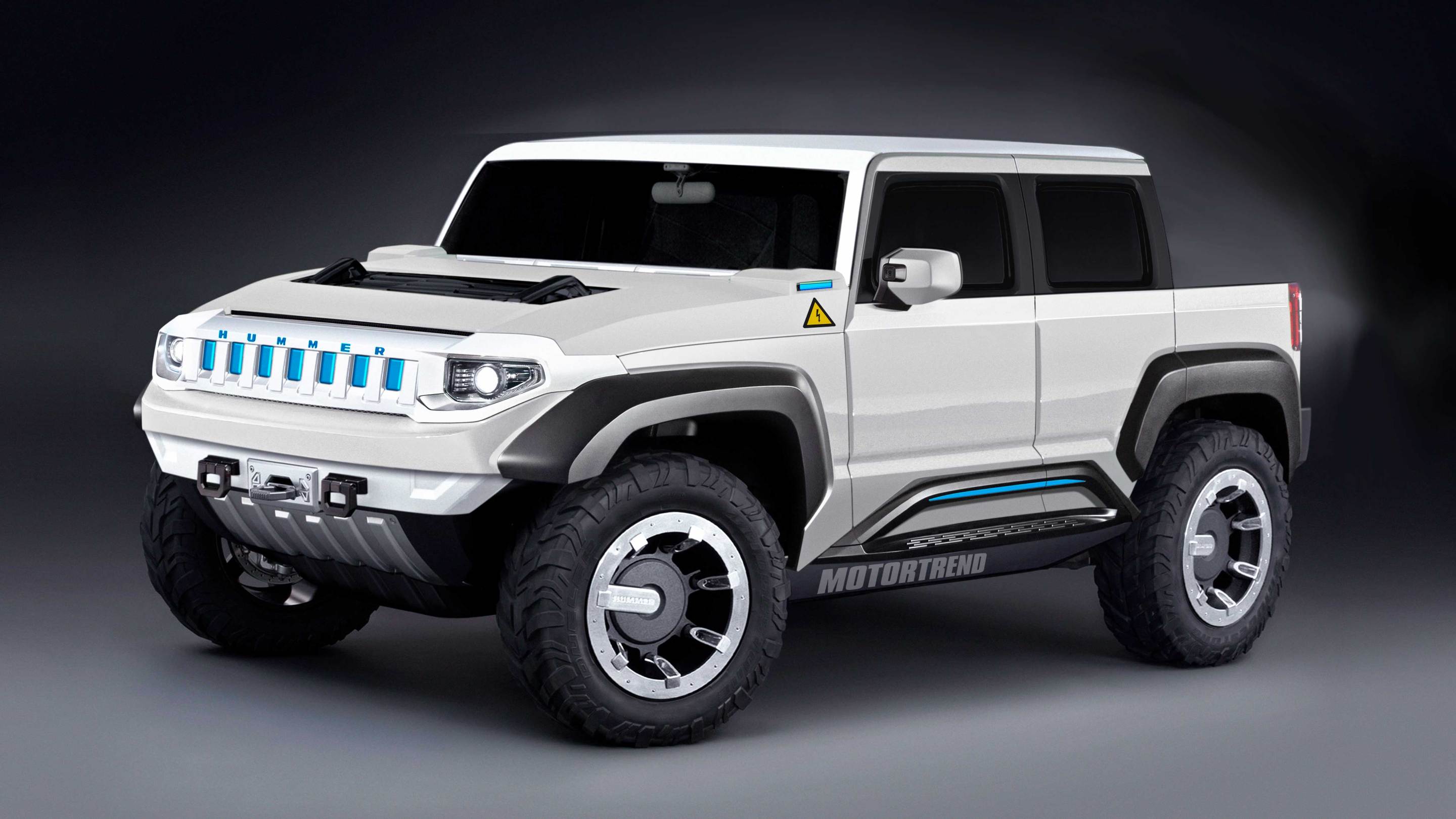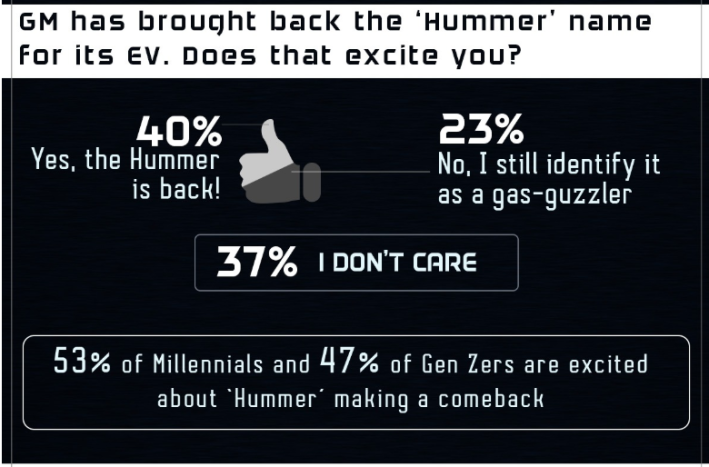This is the third part of Streetsblog's series about GMC's new Hummer EV, which was revealed in a glitzy Super Bowl ad featuring LeBron James that seeks to greenwash the heavily polluting and deadly vehicle. Part I explored the dirty manufacturing process and huge carbon impact in creating the so-called "green" vehicle. Part II looked at how little positive impact an electric Hummer will have on carbon emissions on the road. Today, we conclude by exploring what the Hummer EV will mean for road safety. (Hint: it won't be any better than the regular Hummer.)
Part III: If it drives like a Hummer, and kills like a Hummer...
The Hummer EV will be as humongous as its non-electric predecessor, so it will belong to a class of cars that kills more people on American streets than any other.
Across the world, 270,000 pedestrians die every year in crashes with cars of all sizes, and 40 percent of pedestrian deaths in the U.S. involve an SUV.
Certainly, climate change is a life-or-death matter, with an estimated 150,000 people dying annually from events linked to global temperature rise, but the minimal positive impact of an electrified Hummer is eclipsed by how deadly Hummer-scale vehicles are to Americans every day.
The relationship between big cars and big roadway deaths has long been known; as early as 2003 — during the Hummer's original heyday — researchers at the National Highway Traffic Safety Administration noted that large SUVs had pedestrian fatality rates nearly three times that of smaller cars.
Of course, no SUV-limiting legislation followed. GMC still sold 35,259 Hummers that year alone. (Note: The Hummer is kind of a monstrosity: it's sometimes classed as an SUV, and sometimes as truck, but has a height and weight closer to some makes of large van. Suffice it to say, it probably belongs somewhere between the two most fatal categories in the chart below. )

In the years since the original Hummer left the market in 2009, big cars haven't gotten any safer — at least, not for the non-drivers they hit. There was a 46-percent increase nationally in pedestrian fatalities between 2009 and 2016, even as improvements in anti-rollover vehicle design and advances in medical technology have saved more drivers' lives nearly every year.
The National Highway Traffic Safety Administration blamed that horrifying leap in pedestrian deaths on the rising popularity of SUVs and other mega-cars among American consumers.
"Because an SUV’s front end is higher and blunter than a car’s, it is more likely to hit a pedestrian in the chest or head, impacts that are more often lethal," AARP said in its summary of the report.
To be more specific: a pedestrian remains two to three times more likely to be killed if he or she is get hit by an SUV than by a smaller car.
The traditional Hummer, unsurprisingly, is plenty big enough to strike even a taller-than-average American at the head or neck level. This illustration provides a handy cartoon of noted Hummer enthusiast Arnold Schwarzenegger for scale:

The effect is even more pronounced with today's SUVs, as this picture from a recent auto show reveals:

Despite the abundant evidence that the Hummer EV will be just as deadly as the rest of the monster trucks on our roads, early market research indicates that 62 percent of millennials are excited about its release. About 70 percent of that same group cares about global warming, so it's a safe bet that there are more than a few Hummer EV-hopefuls who are interested in the car's potential to slow climate change — regardless of the lives it will claim on roads.
It's not challenging to see why. Americans tend to call traffic crashes "accidents," an unstoppable force of nature that we're as powerless to stop as we are to change the weather. Even for many climate activists, who are literally working to change the weather, killer cars like the Hummer can seem like a permanent fixture of our transportation landscape. If you can't beat 'em, join em, right? At least we can electrify them!
But we don't need to choose between ending roadway deaths today and saving the planet tomorrow. We must recognize that we don't need to settle for an electrified version of the same toxic auto-dependency that's been killing our planet and our people for years. It's not enough to wait and cross our fingers that someone will figure out how to clean up the power grid and the EV manufacturing process sooner or later. And we definitely don't need to pander to the class of people who buy Hummers — one of the most destructive consumer vehicles in history — by tricking them into driving electric cars, all without changing anything else about their worldview.
If we want to have a truly sustainable climate future, we must look to greener, safer, better transportation options: biking, walking and transit.
Hey, LeBron, want to make a Super Bowl ad for those?
Coord invites cities and other curb managers to apply for its Digital Curb Challenge to undertake a free curb management pilot program in 2020. Applications close on Feb. 14. Click here for information.







